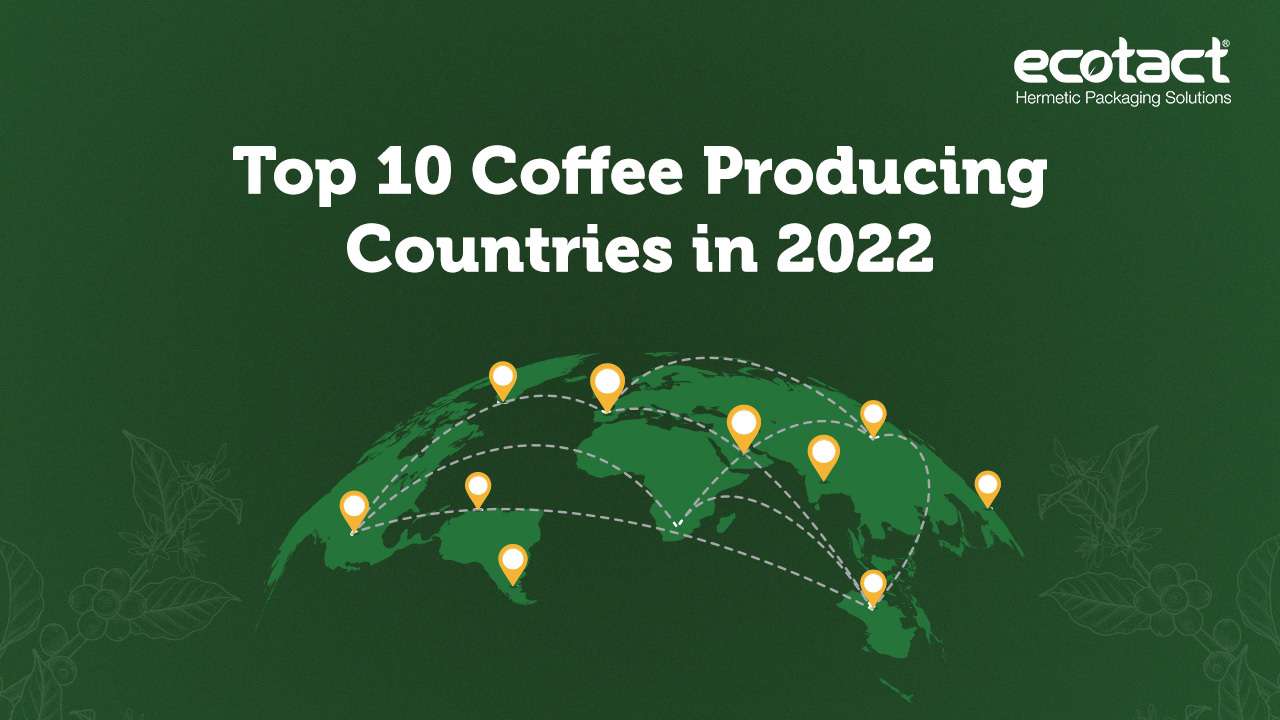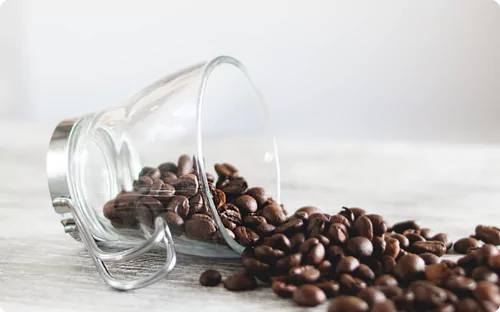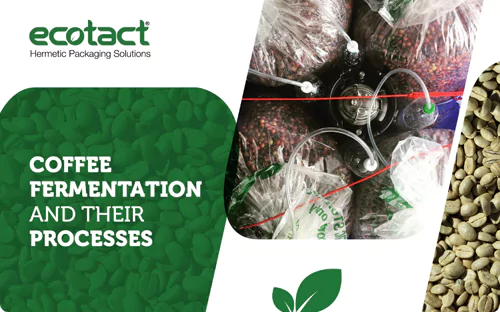This Top 10 Coffee Producing Countries in 2022 list shows the top 10 countries producing full of beans. Coffee plays an important role in each nation and economy.
Introduction
Thanks to the striking shift in the demand for coffee across the world, the global coffee market is all set to create a revenue mark of USD 155.64 Billion by 2026 and record a massive compound annual growth rate in the next 4 years.
But what geographies are really witnessing the major production of this agricultural commodity?
The evergreen players in the global coffee production
Over the span of a few decades, the total coffee production by country has been on a slight shuffle amongst the top coffee producing countries 2022 in the world. Notably, the largest coffee producers in the world are Brazil, Vietnam, and Columbia. These places are known to be the powerhouse of coffee production.
What makes them unbeatable across continents?
Like other seeds, coffee does not sustain itself in all parts of the world. Most of the coffee production hubs have common geographic factors that affect their growth to a large extent — they fall under the Bean Belt. This region comprises the Tropic of Cancer & the Tropic of Capricorn. The coffee found its origin in Africa and later branched out in the East & West of Africa, forming the Bean Belt. Therefore, coffee beans naturally flourish in warmer tropical climates.
A boon to the nation’s economy
On a global scale, there is an ever-growing interlinkage with the country’s economy. As per an ICO report, the coffee industry provided over half a million direct/indirect employment & contributed over 10% to Vietnam’s GDP in the last few years. Similarly, Indonesia’s peerless “aged coffee” amounts to about 6% of world export rates. Thus, with a conducive ecosystem for coffee production, most of these nations have benefited largely from this socioeconomic crop, which has impacted their economies magnanimously.
As for decoding the consumer psyche, the largest coffee producers in the world contribute immensely in enriching a consumer’s experience with richly aromatic coffee beans. So let’s understand where the journey of the Arabica and Robusta really begins.
To find the best coffee producing countries around the world, let’s explore across geographies to learn not just about which country has the best coffee but also what makes them the best coffee producing countries globally.
According to an article by World Population Review, the list of leading coffee producing countries are as follows-
Brazil
This leading coffee producing country generates 40% of world coffee production, exporting approx. 2.6 million metric tonnes of coffee yearly. Its national drink, coffee, is seen to be grown 70% as Arabica beans while Robusta is found in other regions.
Vietnam
Exporting a whopping 1 million metric tonnes of coffee, Vietnam produces 95% Robusta beans in the Central Highlands. Hence, they’re a good choice for blends or instant coffee.
Colombia
Colombia is known to produce some of the most high-quality arabica coffee in the world along with its 200 years old farming methods. The best-tasting coffee flavours are produced with distinctive tastes in Vietnam. It exports over 800,000 metric tonnes of coffee worldwide.
Indonesia
Indonesia is considered to have one of the most unique coffee processing methods. About 20 varieties of coffee are grown and exported from this country with the major popular types being produced in Bali, Flores & Java to name a few. The beans have a distinct woody body, strong earthy flavours & an acidic taste.
Ethiopia
It is the birthplace of Arabica and the native coffee plants produce the finest-quality coffee, especially in the case of single-origin beans. The premium coffee beans are known for their floral aroma and deep chocolatey & wine flavours.
Honduras
Comayagua is the largest producing region in the centre of the country and is known for sweet and fruity aromas of hazelnut, vanilla, or red fruit depending on the type of flavour.
India
There are about 210,000 coffee producers in India, primarily small growers. They grow both Arabica beans and Robusta coffee beans, mainly in the southern part of India in Tamil Nadu, Kerala and nearly 65% of the production in India happens in Karnataka.
Uganda
Uganda has a lot of mixed-crop farms that grow Arabica beans at 13% production rate. It is the largest exporter of Robusta beans in Africa. That shouldn’t surprise us since Robusta, growing majorly in the Lake Victoria basin, is native to this country.
Mexico
It is the number one exporter of organic coffee beans. With 95% of the Arabica beans produced, they produce a unique taste by thriving in cooler temperatures.
Guatemala
Guatemala produces approx. 204,000 metric tonnes of coffee per year where the Antigua region produces the most popular specialty coffee bean known for the volcanic soil. Exclusively Arabica is grown in Guatemala where the main varieties include Caturra, Red and Yellow Catuai and Red and Yellow Bourbon.
Sustainable Coffee Packaging : From bean to beaker
Coffee beans are highly sensitive to the environment and should be packaged in sustainable premium quality storage bags with high oxygen barriers to keep the beans farm fresh. Before the coffee beans reach the roasters, they are subjected to a long period of transportation and that is where the real test of optimal hermetic packaging occurs. In such cases, moisture-locking recyclable bags that can be reused up to three times becomes the go-to product for hermetic packaging. A wide range of storage and packaging bags by Ecotact help significantly reduce the hassle and risk of transporting coffee beans across the globe. The nine-layered hermetic packaging bags are especially designed to protect your coffee beans against any chemical or physical damage altogether.
By picking multi-layered coffee storage bags that eliminate the chance of any chemical or physical damage in the course of longer shipments. To keep your coffee beans freshly aromatic as ever is the key.
After all, the best beans brew the best coffee!
 English
English
 Spanish
Spanish French
French


